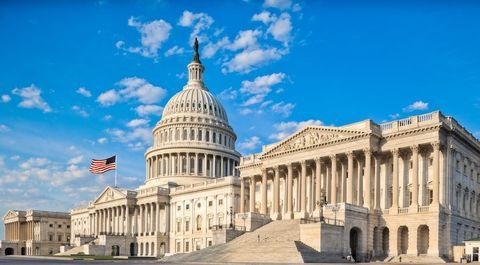Can False Claims of Patent Protection Land You in the False Advertising Dawg(s) House?
Client Alert | 3 min read | 10.15.24
The Federal Circuit recently held that a claim that a product is protected by patents when it is not may constitute false advertising. Defendants in this case, Dawgs Inc., accused the makers of Crocs of using the terms “patented,” ‘proprietary,” and “exclusive” in its advertising in a manner that misled consumers about the nature, characteristics, or qualities of its own products and the products of its competitors. Specifically, Dawgs alleged that Crocs made promotional statements that a patent covers its Croslite shoe material, that Croslite has numerous tangible benefits found in all of Crocs’ shoe products and that, because Croslite is “patented,” others’ products lack these same benefits. Crocs, Inc. v. Effervescent, Inc., No. 2022-2160, 2024 U.S. App. LEXIS 25001 (Fed. Cir. Oct. 3, 2024).
This case began when Crocs sued several competitor shoe distributors for patent infringement. The competitors, U.S.A. Dawgs, Inc., Double Diamond Distribution, Ltd., and Mojave Desert Holdings, LLC (collectively, “Dawgs”), responded with a counterclaim, alleging that Crocs’ claims that its footwear was patent protected were false in violation of Section 43(a) of the Lanham Act, 15 U.S.C. § 1125(a) and that it was harmed by Crocs’ false advertisements and commercial misrepresentations to footwear consumers.
Dawgs alleged that Crocs had engaged in a “campaign to mislead its customers” about characteristics of “Croslite,” the primary material comprising Crocs’ footwear products. Dawgs claimed that Crocs’ website falsely described Croslite as “patented,” “proprietary,” and “exclusive.” By promoting Croslite as “patented,” Dawgs claimed that Crocs misled current and potential customers to believe that “Crocs’ molded footwear is made of a material that is different than any other footwear,” thereby deceiving consumers into believing that its competitors’ molded footwear products are made of inferior material.
The United States District Court for the District of Colorado found that Crocs’ false claims to have “patented” Croslite were not actionable under Section 43(a)(1)(B) because any claim that a product was patented was directed to inventorship, and could not form the basis for a cause of action under the Lanham Act. On appeal, the Federal Circuit disagreed, holding that the falsehood that Croslite was patented went to the nature and qualities of Croslite, which Crocs advertised as ‘exclusive,’ ‘proprietary,’ and/or ‘patented,’” causing customers to believe that “Crocs’ molded footwear is made of a material that is different than any other footwear.” Based on this finding, Dawgs’ false advertising claims were maintained, and the case was remanded for further proceedings.
Key Takeaways
- Beware New False Advertising Claims. False advertising claims under the Lanham Act provide competitors with another avenue to challenge improper or false patent claims. Only the government is permitted to pursue false marking lawsuits to recover statutory damages, but this decision opens the door for competitors to attack improper patent markings. Individuals seeking to recover damages based on improper patent markings may now (or more frequently) consider pursuing action under the Lanham Act.
- Know What Your Patents Cover. When extolling the benefits of a product based on a patented—or in Croc’s case a purportedly patented[1] feature, double check to make sure that this feature is covered by a patent claim and that such a claim is still valid. Companies should always be mindful about falsely marking its products as patented when they are not.
- Do Your Homework. Stay abreast of the current marketplace and competitors’ advertising and marketing of their products. Keeping a finger on the pulse of your product space may include monitoring competitors’ patent, trademark, and copyright filings, reviewing their marketing materials, and seeking out consumer feedback regarding your own and others’ offerings. Likewise, when considering an infringement action against a competitor, make sure your house is in order first. Doing so helps avoid (or defend) against counterclaims.
- Audit Your Marketing Materials. A false patent marking on a product can expose a company to liability for false advertising. Companies should be especially cautious of the ways in which it advertises its non-patented products.
[1] Crocs admitted that it was never granted a patent for Croslite both in its briefing and at oral argument. Crocs, Inc. v. Effervescent, Inc., No. 2022-2160, 2024 U.S. App. LEXIS 25001 at 7 (Fed. Cir. Oct. 3, 2024).
Contacts
Insights
Client Alert | 2 min read | 12.29.25
FYI – GAO Finds Key Person “Available” Despite Accepting Employment with a Different Company
GAO’s key personnel rule is well-known—and often a source of frustration— amongst government contractors. Proposed key personnel who become “unavailable” prior to contract award—especially where they have accepted employment with a different company—may doom an offeror’s proposal by rendering it noncompliant with solicitation requirements. But GAO’s recent decision in FYI – For Your Information, Inc., B-423774, B-423774.2 (Dec. 19, 2025) provides some potential relief from that rule.
Client Alert | 6 min read | 12.29.25
Investor Advisory Committee Recommends SEC Disclosure Guidelines for Artificial Intelligence
Client Alert | 4 min read | 12.29.25
More Than Math: How Desjardins Recognizes AI Innovations as Patent-Eligible Technology
Client Alert | 10 min read | 12.24.25





